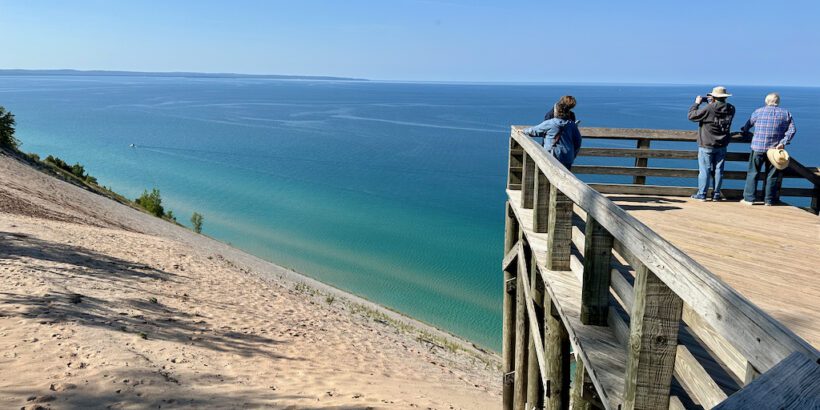Perched along the serene Pierce Stocking Scenic Drive in Michigan lies the Sleeping Bear Dunes Overlook, a majestic 450-foot sand dune that offers visitors breathtaking panoramas of Lake Michigan.
While most tourists flock to the designated overlook area with informative interpretive panels to marvel at the captivating view, an adjacent rugged path along a steep dune beckons to the adventurous.
However, this path carries with it a reputation for numerous emergency rescue attempts. In this article, will take a look at this interesting spot and give some insight into the dangers and adventures that it offers.
Table of Contents
What is the Sleeping Bear Dunes Overlook?
The Sleeping Bear Dunes Overlook, also referred to as No. 9 Overlook, is a towering 450-foot sand dune located along the picturesque Pierce Stocking Scenic Drive. From this vantage point, visitors are treated to awe-inspiring vistas of Lake Michigan.
Most visitors gather at the designated overlook platform, complete with informative interpretive panels, to soak in the breathtaking view.
However, adjacent to this spot, there exists a rugged path along a steep dune that adventurous souls sometimes venture down. This path has garnered a reputation for the numerous rescue attempts it has necessitated over the years.
Don’t get this overlook confused with the “dune climb” which is a popular tourist spot allowing visitors to climb up a large dune and proceed on a hike to the lakeshore if desired. That’s located at a different part of the park. If you want to find the No. 9 Overlook, you’ll run into it towards then end of the Pierce Stocking Scenic Drive.
Related: Pictured Rocks Kayaking Tour Review (Tips For Your Visit)
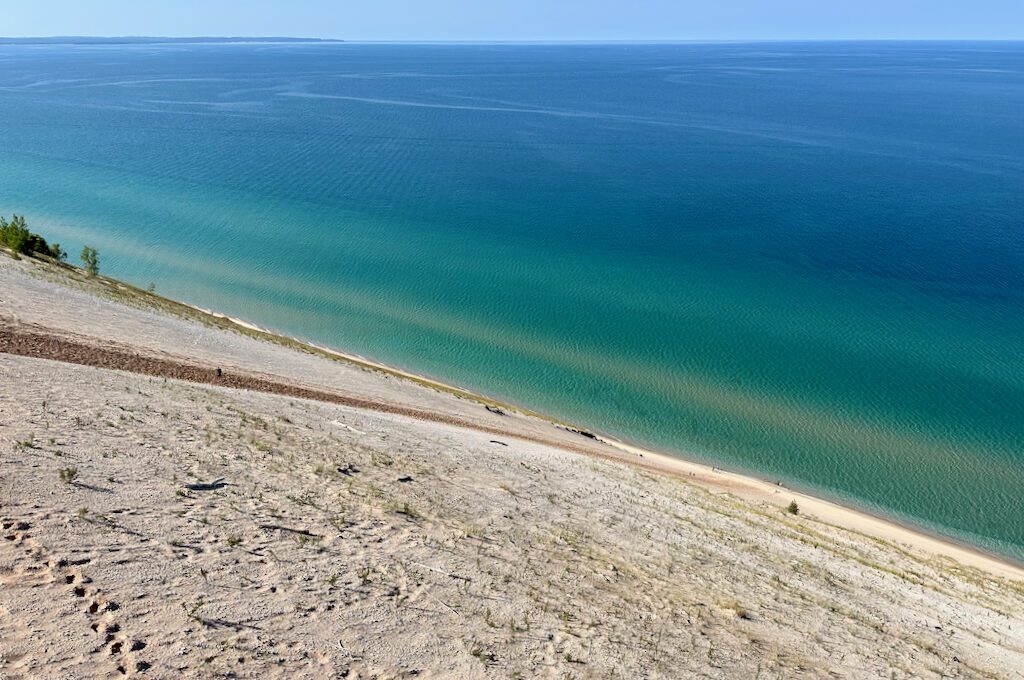
Sleeping Bear Dunes Overlook history
Over the years, this overlook, known as No. 9 Overlook, has garnered quite a reputation as a hotspot for emergency rescues. It has been a site where numerous 911 calls have been made, resulting in some tourists facing substantial expenses when they found themselves unable to make a safe return.
Just how challenging the rescue is, depends on the water levels.
When lake levels are lower, rescue operations involve the use of an ATV to traverse the beach, reaching individuals and bringing them back to safety. This approach is not only more practical but also significantly more cost-effective than what is needed in high water level years. During these times, a rescue of this kind might incur a cost of approximately $700.
But in years with higher water levels, rescue operations become more expensive, requiring a team of 8 to 10 highly trained personnel to employ rope techniques for lifting victims to safety, sometimes hundreds of feet up the steep sides of the dune. This intricate and labor-intensive method can cost upwards of $2,000 to $3,000.
The responsibility for covering these rescue expenses falls upon the individuals who are rescued, although it’s reported that only approximately half of them actually fulfill this obligation.
Consequently, the fire department is left to shoulder the remaining costs, making it a challenging situation for both the individuals involved and the local authorities.
Related: Dining at The Cherry Hut: From Turkey to Cherries – A Review
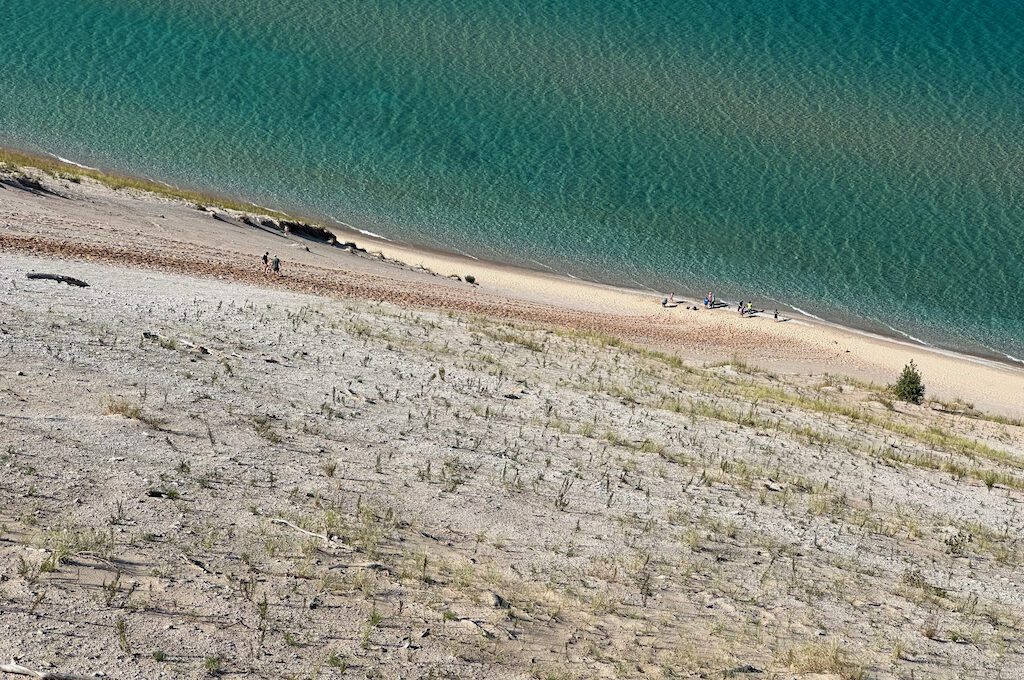
Why exactly is this considered so dangerous?
The biggest problem is probably visitors being unprepared for the strenuous climb back up.
Trekking uphill on loose sand is not an easy task and can be much more exhausting than a lot of people anticipate.
It’s also common to see people head down without any water supplies, even during warm summer months. After 20 to 30 minutes of strenuous exertion, it’s really easy to get dehydrated and that can be a major problem.
There’s also the issue of potentially getting injured going down.
While sand can be very forgiving, a bad tumble could send you down without being able to stop. Also, if you take a look at the sand you’ll notice that there are quite a few rocks within the sand that could easily cut somebody up.
These risks have been highly publicized and as a result the amount of rescue attempts have decreased.
This has a lot to do with getting the message out about the dangers of heading down to the water via volunteers. A few years back they started a program that brought out volunteers who would try to dissuade people from making the trip down the dune.
There’s also a sign at the top that warns about the dangers and about having to pay $3,000 for being rescued.
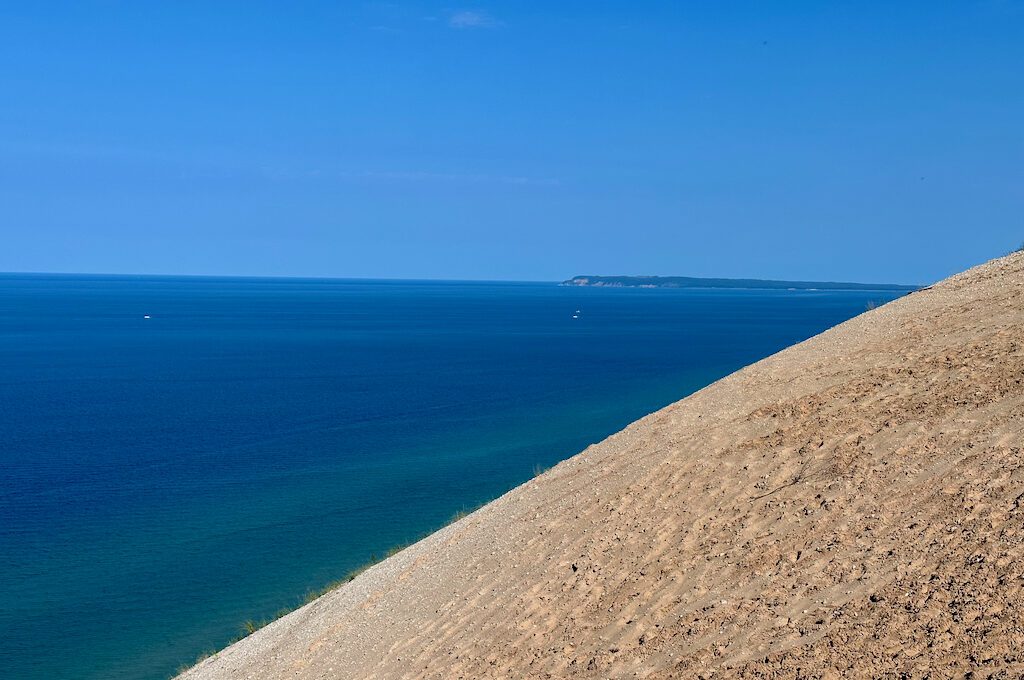
Some people criticize the policy and warnings requiring people to pay for their rescue.
The argument is that this could incentivize people to not request for help and potentially put themselves in fatal danger. As someone who is big on personal responsibility, I don’t mind requiring people to cover their emergency fees. However, there is always that potential for it to backfire (though that doesn’t seem to be a problem here).
Regardless of some of the criticism, the success of these deterrents has been evident by the number of rescue calls which in some summers has been as slow as only 2 to 3 compared to previous years where in peak season they could receive as many as four rescue calls per day!
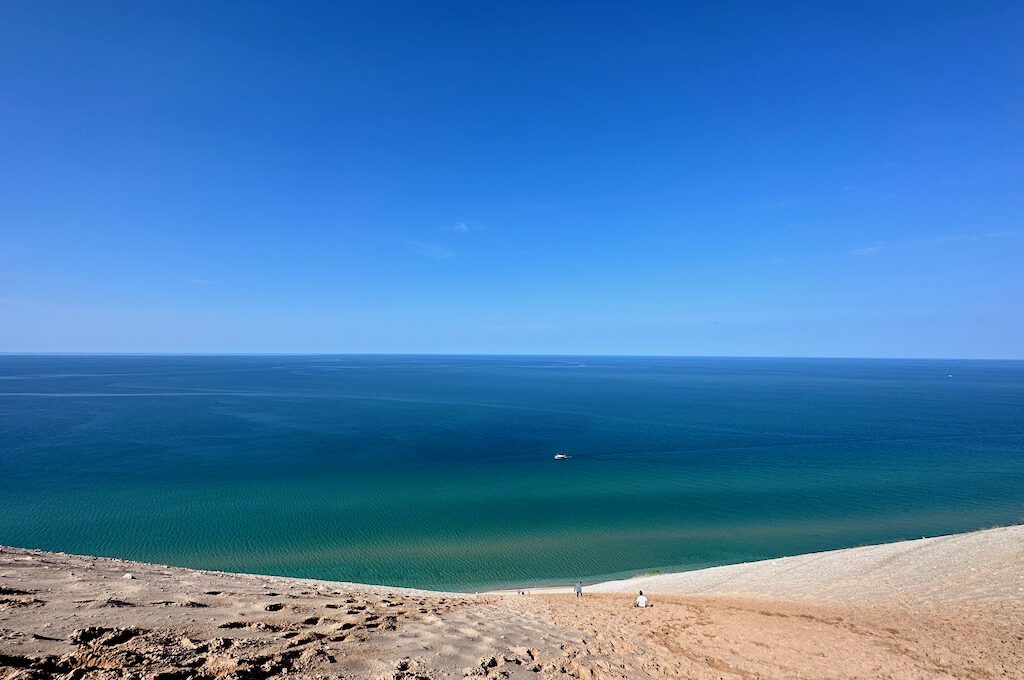
Should you make the trek?
Ultimately, the decision to undertake this type of climb rests with the visitor, and it’s important to assess your own capabilities and physical condition. Depending on your fitness level, it could take you anywhere from 30 minutes to close to two hours to get back up.
Regrettably, I found myself in a situation where I had thrown my back out a couple of days prior to my visit, making the temptation of attempting this climb out of the question for me.
Nevertheless, as someone who has tackled numerous hikes, including very strenuous ones like descending to the bottom of the Grand Canyon and back in a single day, I can offer some valuable tips.
First and foremost, pay close attention to the temperature, especially if you’re attempting this climb during the summer months. It’s advisable to start early in the morning when temperatures are lower. This approach will greatly aid in preventing dehydration and ensure that the sand isn’t scorching hot under your feet if you choose to go barefoot.
Personally, I would recommend wearing some form of footwear due to the concealed rocks in the sand. Nothing would be more unfortunate than injuring your foot while making your way down there.
I observed various approaches to descending the dune. Some adventurous souls opted for the thrilling sprint straight down the slope, almost seeming to glide on the sand – undoubtedly a lot of fun.
Others chose a more cautious zigzag pattern, a prudent strategy to avoid a potential disastrous tumble.
Then, there were those who took a measured and methodical walk down the dune’s flank, arguably the most sensible approach.
If you’re planning this adventure, I recommend having a CamelBak or a similar hydration system with a generous water supply, possibly around two liters. This ensures you stay well-hydrated for the ascent and allows you to easily sip water during your breaks. Having some electrolytes with you like liquid IV or tablets is also a good idea.
Now, onto the journey back up.
I strongly advise pacing yourself when ascending. While a 450-foot elevation gain may not sound daunting to seasoned hikers familiar with elevation changes, the challenge here lies in the loose sand underfoot. Climbing uphill through loose sand requires considerably more effort than scaling solid ground.
Therefore, don’t attempt to power through it on the way up.
Instead, take ample breaks and relish the breathtaking scenery below, including the shimmering turquoise waters. It might also be wise to have some extra supplies on hand, such as a light snacks, a hat, and sunglasses.
Final word
Sleeping Bear Dunes Overlook No 9 has been a place where lots of people have gotten into a scary situation and there have been many rescues over the years. But with the public more educated about the risks, it seems that those rescues have declined. For many people, it’s worth just admiring the views from the observation platform which might be some of the best you’ll find in Michigan.
Daniel Gillaspia is the Founder of UponArriving.com and the credit card app, WalletFlo. He is a former attorney turned travel expert covering destinations along with TSA, airline, and hotel policies. Since 2014, his content has been featured in publications such as National Geographic, Smithsonian Magazine, and CNBC. Read my bio.

